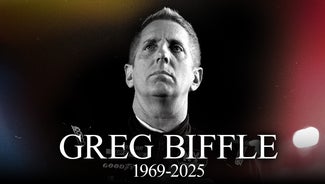
Sprint car safety procedures in question
Three-time NASCAR champion Tony Stewart reignited the debate about the danger of open-wheel winged sprint cars when he broke his leg last week in rural Iowa.
It was the third crash in a month for Stewart. It came after former NASCAR driver Jason Leffler died racing sprint cars in June, and longtime driver Kramer Williamson died after a crash earlier this month.
Sprint car racing has always been inherently dangerous - that's a big part of its appeal - but the spate of high-profile wrecks has some questioning whether the cars are as safe as they should be.
''They understand that these cars are rocket ships and that there's danger involved. Me as a competitor and seeing what has happened in our sport and what has influenced change for the good in safety, I'm hoping that those with the World of Outlaws and those that are the influencers ... would be willing to step it up,'' said Jeff Gordon, a four-time NASCAR champion who raced sprint cars early in his career. ''They've made slight changes and improvements in this area. Obviously, it's not enough.''
Gordon's not the only one concerned about the safety measures in place for sprint cars, which generate tremendous horsepower and can be a ton lighter than a NASCAR race car. Sprint car star Donny Schatz, who last weekend won the famed Knoxville Nationals title for the seventh time in eight years, is among those clamoring for change.
''I'm not confident that safety measures are (being) met in this sport. There are a lot of people that are working hard to perfect things, to make things better. But sometimes people don't see things until people get hurt,'' Schatz said. ''There are some areas that safety can be addressed. But it's also a gray area that no one wants to get involved in.''
Schatz drives for Stewart's sprint car team. Like Stewart and fellow NASCAR driver and sprint car enthusiast Kasey Kahne, Schatz runs in the safest equipment available. But Schatz believes that not all of his competitors are putting safety ahead of speed.
Schatz said that manufacturers and sanctioning bodies need to work together to implement more car specifications that put safety first.
Brian Carter, the CEO of the World of Outlaws sprint car series, said the sport has made significant strides in recent years.
Carter pointed to roll cages, the car's weight requirement of 1,400 pounds - which is intended to keep them from becoming dangerously light - and chassis improvements designed with safety in mind. Carter also said sprint cars have adapted some of the head and neck restraint technology from NASCAR.
''The sport has come a long, long way in recent history to make it safer and safer,'' Carter said. ''There's quite a lot of progress that's been made. There are still a few areas where we need to understand implications of all of the safety advances.''
It's not just the cars, though. The condition of the dirt tracks that host sprint cars is also crucial.
Carter said World of Outlaws tracks are inspected by the organization's insurance company before being approved as a venue, and requirements include high walls and a catch fence with cabling. The series also requires safety response and fire safety teams to be on hand at every race.
But small tracks can only do so much. It's unrealistic to expect small dirt tracks across the country to adopt the expensive SAFER barrier walls now required in NASCAR.
''It's going to be open wheel racing. Until we change that, these cars are going to catch a wheel and they're going to flip. The key is really keeping the driver safe,'' Carter said. ''The key is ... knowing that they're going to flip and tumble, and making sure that we understand what happens when they do and make sure the driver's compartment is as safe as it can be.''
Carter said World of Outlaws is constantly reviewing its safety procedures, adding that changes could be made in the offseason.
But the tug of war between safety and speed will likely continue. Sprint car drivers have long internalized the constant presence of danger, knowing that the element of risk is part of the sport's charm.
''Nobody wants to give up an advantage in performance and these guys, like I said, I compare them to space cowboys. That's what makes them awesome and that's what makes the cars incredible. That's what makes their fan base as loyal as it is,'' Gordon said.
---
AP Sports Writer John Kekis contributed to this report from Watkins Glen, N.Y.






